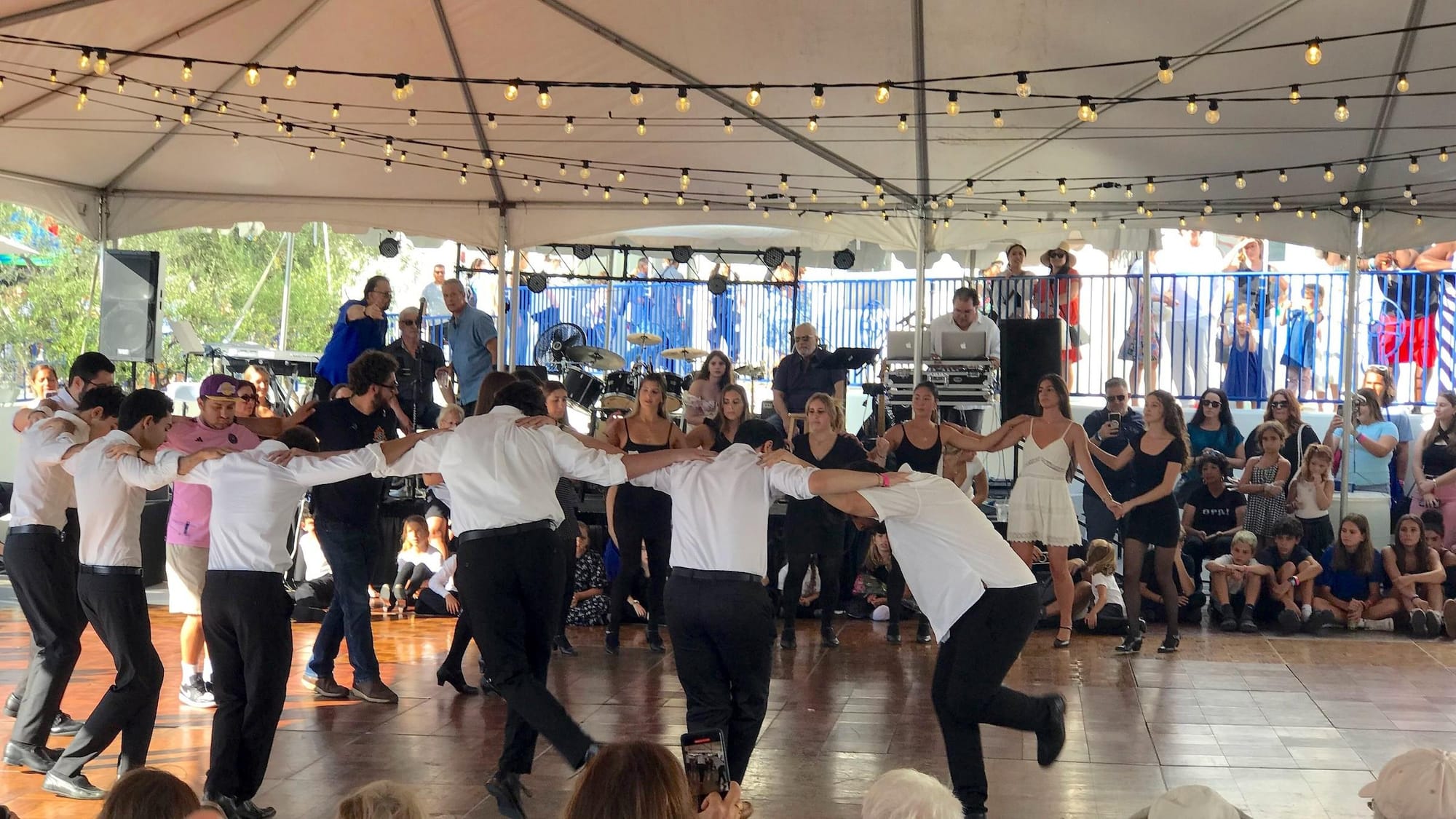LONG BEACH GREEK FOOD & MUSIC FESTIVAL
Assumption of the Blessed Virgin Mary
Long Beach
Aug. 31 – Sept. 2, 2024
In the Aquatic Capital of America™, it’s easy to gaze seaward and visualize the lifestyles of ancient Mediterranean empires. Before the destructive Spanish arrived in the 16th century, the thriving Gabrielino-Tongva locals utilized maritime routes to trade between the scattered Channel Islands, paralleling the Phoenician sea-merchant empire 7,000 miles away. Today, you can hop on a ferry to horizon-dominating enclaves like Catalina to buy wares, eat seafood, and dodge vicious beasts,then head back to your wife and son, all on an odyssey spanning far less than a decade. From the water, you’ll see coastal bluffs descending to bustling man-made ports, dramatically reemerging as dynamic cliffs that wrap around San Pedro and the commanding Olympus of Palos Verdes, as late winter’s enigmatic fog licks dry rocks until they crumble to coves below — then Scylla flings your skiff into the breakwater, and the Coast Guard arrives to slay her, all in a day’s work.
As someone heavily influenced by Edith Hamilton’s Mythology (1942) but lacking present-day Hellenic acquaintances, I couldn’t resist attending the annual Long Beach Greek Festivalfundraiser to learn more.
This past Sunday lived up to its name as my face roasted in tandem with the chicken spits. The grounds of the Assumption of the Blessed Virgin Mary, a grassy nook circumscribing a modern Greek Orthodox church in full white-walls-blue-domes Santorini pastiche, was converted to a small, packed carnival alley, lined with vendors of carved olive wood,olive oil, and rival olive oil. A máti amulet arsenal offered to dispel any evil energy I dragged in, but I’d allotted my entire budget for food.
Like weed-haze at Woodstock, souvlaki smoke soaked every corner and armpit of the festival. Seasoning scents clashed with the sweet honey of baklava and loukoumades (globular “donut treats” piled high with cinnamon and nuts). The booth I sought was dad-jokingly labeled “Vegiterranean”; I only had to compete with three people for a spot in line, unlike the carnivores queueing the length of the festival to access gyro-fries. I nearly went bankrupt trying an authentic frappé (not my cup of tea), fresh dolmades (savory “grape leaves stuffed with rice,” soaked in olive oil), and both a tiropita and a spanakopita (filo Hot Pockets infused with a feta slab and a spinach-and-feta mush, respectively). The food tasted homemade, as it was likely the result of “Greek grandmothers working with professional cooks.” Mine was a self-destructive meal: fallen filo flakes keep surfacing in my shoes two days later.
What mesmerized me most about the proceedings, ultimately, was not comestibles but the dance-floor tent, an event zone I typically avoid as I’m more of an observer than a participant in my own life. But I needed shelter from solar radiation, so I snagged a folding chair ringing the temporary wood platform and watched Greeks boogie. Before I knew it, an hour had vanished; my attention was snared. The live band jammed for unbroken 10-minute stints, complete with keyboard and mandolin solos, while a pair of spirited wireless-miked singers manifested a father-daughter dynamic, twirling among gyrating randos. For every reluctant boyfriend dragged to the floor, there were nine multigenerational ladies partying like hell — so approximately 20 dancers. The tent consistently emptied between songs, and every time, the same granny in a pink T‑shirt was the first to chest-shimmy and crotch-thrust her way back out; the ultimate hype woman, she inspired throngs to trickle from their seats and rejoin the rhythm river. The emcee frequently punctuated this space with hearty cheers of “Opa!”
The free-for-all eventually dissembled to make room for the Assumption Dance School showcase. Initially, an endearing group of formal five-year-olds waged a losing battle for control of their legs amid the onslaught of their prerehearsed song’s tempo. After a follow-up performance of relaxed trotting by mid-tier preteens, the young adults flawlessly concluded by demonstrating what 15 years learning traditional Greek dance will teach you. They kicked their feet sporadically but with intention, arms latticed across one another, in an interlocking feat of structural engineering and coordination that transformed them into a giggling human millipede spiraling toward the tent’s center — their movement evoked Singin’ in the Rain, as animated by Junji Ito.
Surrounded by the most gorgeous normies I’d ever seen — voluptuous women with waist-length caramel curls in blue-and-white dresses, tan men with Alexander-the-Great faces and uranium eyes — I struggled to leave, even suspected I’d turned to stone. The non-Greek next to me admitted she hadn’t attended for a decade, and this festival iteration was “louder and crowdeder” than she remembered. But the reasons for this growing popularity seemed obvious to me. Cuisine? Heartthrobs? Revelry? Culture? Crank the volume, I say! Everyone should come party with Long Beach Greeks! Opa!






